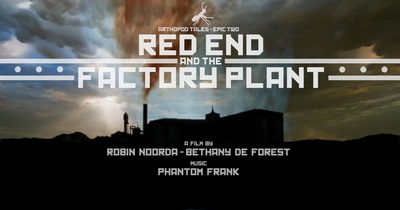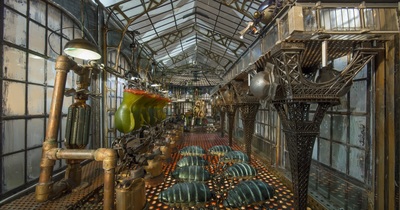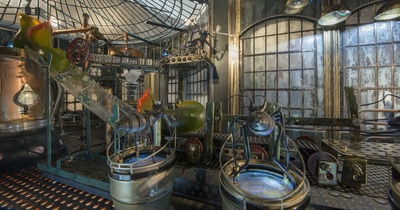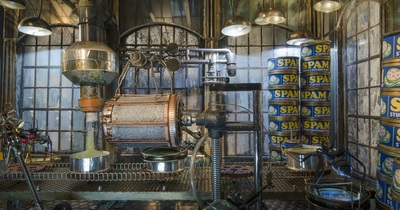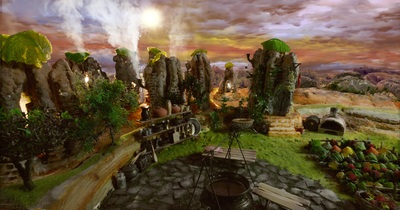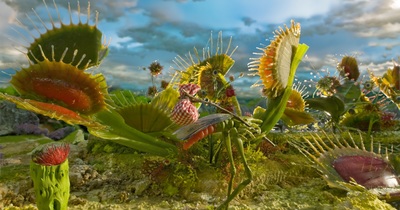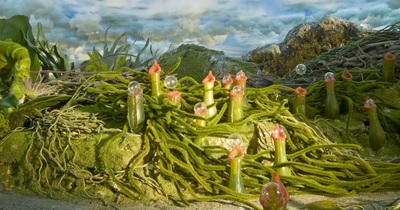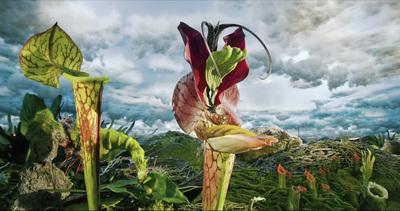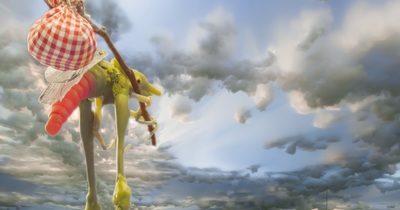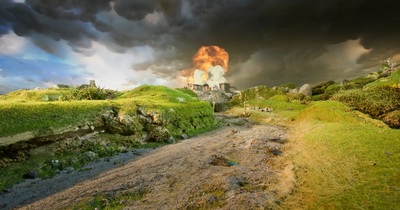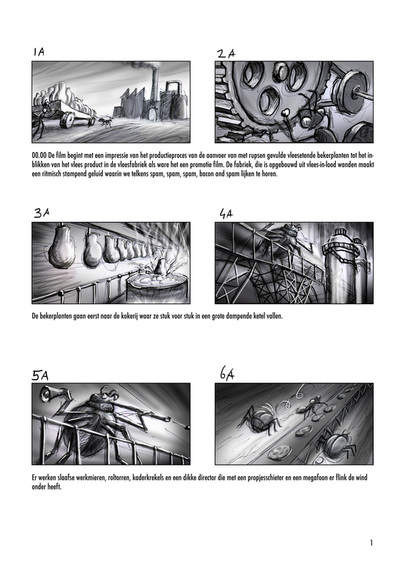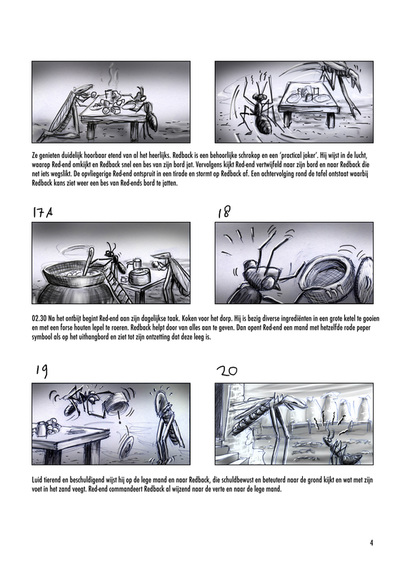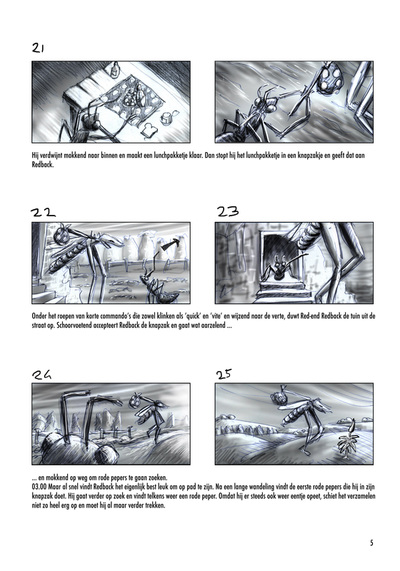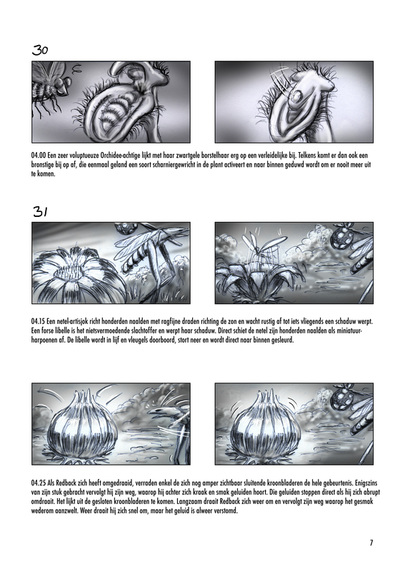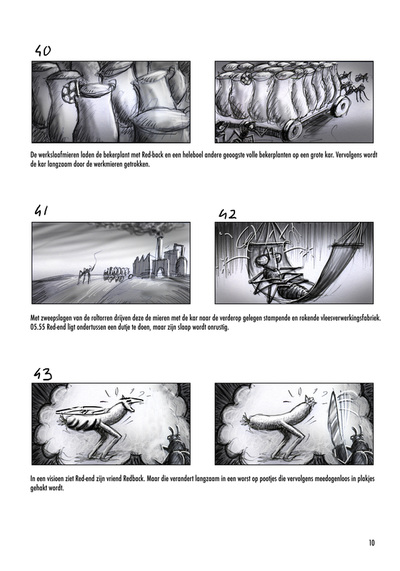Red-end and the Factory Plant
Red-end and the Factory Plant is the 2nd stop-motion animation film in the 'Arthropod tales' series. It premièred at the Dutch Film Festival in 2015 and was nominated for the 'Golden Calf' award. In 2016 it won an award at the NCAIAF animation festival in Sapporo, Japan and received an Honorable Mention for the Devour! Golden Tine Award for Best Animation in Canada.
The story is inspired by the method to feed gooses in order to produce 'foie gras'. In our film carnivorous and loudly burping pitcher plants are being stuffed at a plantation. Next they are harvested and processed at a factory plant into cans of spam.
Our hero Red-end jeopardises it all in his attempt to save his friend who got stuck in one of the pitcher plants.
It is a 4K digital cinema steam punk magical realistic film of 15' dazzling motion control camera movements in stunning sets and amazingly animated arthropods.
Excerpts of an interview for the KUKI Film Festival (Berlin):
How was the idea of this shortfilm created?
Our previous film Red-end and the Seemingly Symbiotic Society was selected for the competition of the Annecy festival in France.
So we went there and on a certain moment we were invited to a party for filmmakers. They offered drinks and 'foie gras’ dipped in chocolate.
Foie gras French for "fat liver” and goose are fattened by a horrible method of force-feeding.
They did not mention it was foie grass and we were quite annoyed as we are against this practice and found it disgusting to be offering it camouflaged in chiclet and not telling what it is.
So we decided to revenge on the French and make an other Red-end film on force feeding. In our film it are not goose that are force fed, but carnivorous plants that are canned in the factory into spam.
What was your intension?
With the foie gras issue we hope to trigger some awareness concerning the bio industry and promote the idea of free range food. Besides that we wanted to make a hommage to great films and comics we like and incorporated all kinds of references. One of the most obvious references is the Matrix. If you spot all twelve of them, you can win a signed poster.
Could you maybe explain the process of producing this kind of animation?
Stop-motion animation is a painstaking proces of frame by frame animation. Al you see is hand made and photographed frame by frame. It took 22.500 frames and five years of work. The actual photographs it took are more, a couple of hundred thousand. Actually the shutter of the professional camera broke down after 150.000 exposures and a new one had to be fitted. We use rigs to let the character stand in a pose without it falling. These rigs have to be paired out of each frame. I have become a Buddhist monk in doing so.
Inquieries robin.noorda(at)gmail.com
Red-end and the Factory Plant is the 2nd stop-motion animation film in the 'Arthropod tales' series. It premièred at the Dutch Film Festival in 2015 and was nominated for the 'Golden Calf' award. In 2016 it won an award at the NCAIAF animation festival in Sapporo, Japan and received an Honorable Mention for the Devour! Golden Tine Award for Best Animation in Canada.
The story is inspired by the method to feed gooses in order to produce 'foie gras'. In our film carnivorous and loudly burping pitcher plants are being stuffed at a plantation. Next they are harvested and processed at a factory plant into cans of spam.
Our hero Red-end jeopardises it all in his attempt to save his friend who got stuck in one of the pitcher plants.
It is a 4K digital cinema steam punk magical realistic film of 15' dazzling motion control camera movements in stunning sets and amazingly animated arthropods.
Excerpts of an interview for the KUKI Film Festival (Berlin):
How was the idea of this shortfilm created?
Our previous film Red-end and the Seemingly Symbiotic Society was selected for the competition of the Annecy festival in France.
So we went there and on a certain moment we were invited to a party for filmmakers. They offered drinks and 'foie gras’ dipped in chocolate.
Foie gras French for "fat liver” and goose are fattened by a horrible method of force-feeding.
They did not mention it was foie grass and we were quite annoyed as we are against this practice and found it disgusting to be offering it camouflaged in chiclet and not telling what it is.
So we decided to revenge on the French and make an other Red-end film on force feeding. In our film it are not goose that are force fed, but carnivorous plants that are canned in the factory into spam.
What was your intension?
With the foie gras issue we hope to trigger some awareness concerning the bio industry and promote the idea of free range food. Besides that we wanted to make a hommage to great films and comics we like and incorporated all kinds of references. One of the most obvious references is the Matrix. If you spot all twelve of them, you can win a signed poster.
Could you maybe explain the process of producing this kind of animation?
Stop-motion animation is a painstaking proces of frame by frame animation. Al you see is hand made and photographed frame by frame. It took 22.500 frames and five years of work. The actual photographs it took are more, a couple of hundred thousand. Actually the shutter of the professional camera broke down after 150.000 exposures and a new one had to be fitted. We use rigs to let the character stand in a pose without it falling. These rigs have to be paired out of each frame. I have become a Buddhist monk in doing so.
Inquieries robin.noorda(at)gmail.com
Trailer
The whole film
Film stills
The Storyboard




